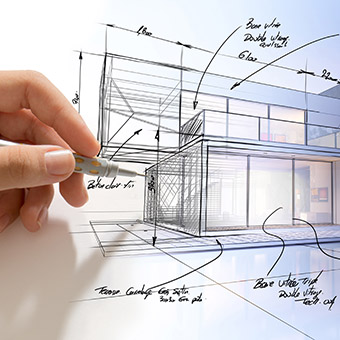Although many steps are taken to ensure construction work can commence without a hitch, unfortunately, most developers will encounter a design problem at one time or another. There’s no need to panic though as long as you have a plan in place on how to tackle issues like this.
Get a clear understanding of what needs correcting
It’s easy enough to see that there is a problem, but you will need a full understanding of what exactly the issue is before tackling it otherwise there is a huge waste of resources. What is the main objective that is meant to be achieved?
For example, we know that the ground is not ever totally flat, so if a client wishes to add an extension onto an existing building, but the area slopes, the design will not be as straightforward. The problem is how to connect these buildings in the best way possible.
Understand what the best interests are
Consider what the desired outcomes are and what would be the best interests in all involved. What is at risk here? What needs to be done to be in accordance with Australian Standards for disability access?
Following the previous example, a developer would need to consider the existing layout and what the clients are hoping to achieve. Do they want flat flooring throughout, or will the new building need to be accessible with stairs or a lift?
Discuss with experts
Finding a solution to a design problem is a team effort. Everybody involved in the project should be consulted for their expertise to come up with all the solutions available and get valuable input. Architects, building companies, surveyors, contractors and others should be made aware of an issue. If everybody is not on board, then there could be a flaw in the plan that may have gone unnoticed by others.
List all the solutions
Make note of all feasible solutions to the problem. Take time to go through every single one. Although an idea may not sound great at first, after discussing it with others you may find that it is actually a great idea.
With a new building wanted on sloping land, a few solutions could include filling the land so that it is level or adding stairs or a small lift.
Select the best option with advice
Again, it is important to have a team of experts involved when making the best decision or you could end up making a costly mistake. Decide which is the best way forward and make sure that all involved are in agreeance.
In the event of the sloping land and new building, the degree of any ramps will need to be discussed. It will need to have a gradual decline at an appropriate degree. If the design will not allow that, then a set of stairs and a small lift may be the best option. Architects can work with surveyors to determine which is best based on the current level of land.
Write down the best solution with all the details and implications
After a solution has been decided, write it down with all the details involved and any implications it might add. What can be done to reduce the implications, if any?
For example, if a ramp is decided, where will the decline begin? If it is a long ramp, it may take up a lot of space, in which case a zig-zag design may be the best way forward.
Have backup plans
A change in one area could have a knock-on effect and create other changes. Make sure you know what may happen to other aspects of the design when implementing your solution and have a solid contingency plan in place.
These are only guidelines that should be followed when a design problem arises. Problem-solving in construction isn’t always straightforward, but the main thing is to work with other experts to come up with the best solution possible.





